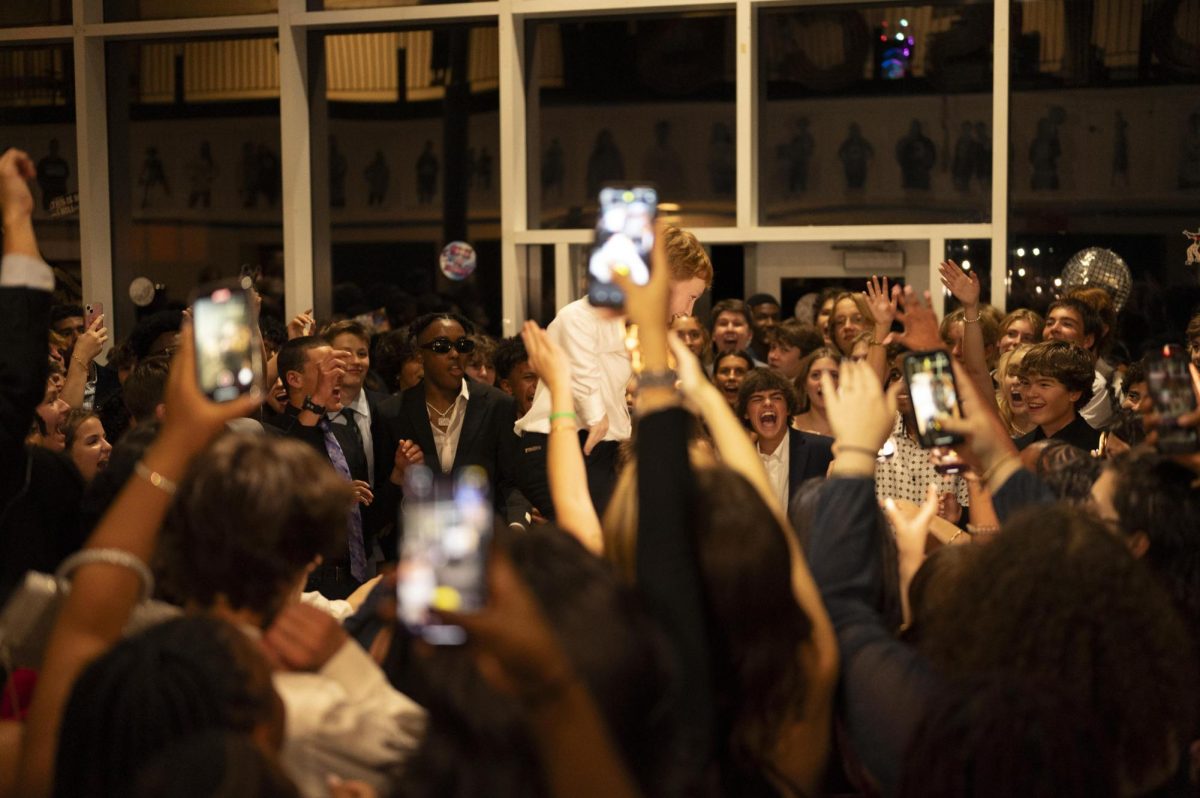Forgotten History of our City
Photographs of the buildings Lane and Jefferson were in.
March 9, 2020
As a journalist and civil rights activist named Sydney J. Harris once said, “History repeats itself, but in such cunning disguise that we never detect the resemblance until the damage is done.” Charlottesville’s history is not one we should take pride in. For the most part we are on the wrong side of history. Racism consumes the past, and leaks into the present. We don’t talk about it. Until we talk about it, until we teach it, until we are all reminded of the past, we can not move forward.
Massive Resistance
In the 1950’s, more and more towns began on their path to achieve equity for all. In Virginia, Senator Harry Flood Byrd led a state-wide resistance to Brown v. the Board of Education to integrate public schools which were segregated at the time. Charlottesville participated in this movement. Federal courts ordered Charlottesville schools to integrate in January of 1958, but the governor at the time, Lindsay Almond, decided to close Charlottesville’s white schools instead of integrating. Resisting integration was more important to governor officials than educating their students. Unofficial schools were created in churches and even houses. Many students went to private schools, but those who could not afford it were left with either no education or an informal, and in many cases an inadequate, one. Some children had no schooling at all.
In February of 1959, the white public schools reopened, meaning many children went without a formal education for around a year. The schools were reopened, but still refused to enroll any African-American students for another six months. Until September 5th of 1959, U.S. District Judge John Paul ruled that Lane High School and Venable Elementary School must admit 12 African-American students. These students are now known as the “Charlottesville 12,” and they mark the first steps of educational integration in Charlottesville’s history.
Even after integration, Charlottesville schools did everything possible to keep the schools segregated. Historically white public schools would require testing only for black students who wanted to enroll. They let white students who lived closest to the historically African-American schools be admitted to the predominantly white schools. They assigned African-American students to the “black schools” even when they were much closer to a primarily white district.
The federal courts ruled these assignment policies unjust, and made the schools switch to districting children based on their residence. The districts were still quite segregated, so in 1986 they considered redrawing district lines, yet they were too worried that white citizens would move out of the areas, a term called “white flight.” They did change the two city middle schools and made one be for all city students in 5th or 6th grade and the other all 7th and 8th. “White flight” did in fact occur, and over the next decade the white population at said public city schools decreased by 20%.
K.T.R. Scandal
An article was published in The Knight Time Review in 1984 about how students felt about their school being integrated, titled “Grading Black-White Relations: 17 Years After Integration.” In this article, they printed quotes from students anonymously. Some students said that black students “hang around the hall. They just come to get heat. They just mess around . . . come to school ’cause they don’t have anything else to do . . . they just come to smoke herb and all that stuff.” Another student said they “like to start fights.”
When students came to school the next day, they found racist messages spray painted in the parking lot. It read “Seniors for white supremacy.” Fights broke out that day. Before noon, the school was shut down. We have archives of newspaper articles dating back to before integration, but all copies of this particular issue have been destroyed. 82.4% of current students at Charlottesville High School were completely unaware of this event. We cannot cover up our past.
Lingering Effects
The segregation that took place more than 50 years ago still affects us today. Just last year The New York Times wrote an article about the differences in education throughout the predominantly white and predominantly black districts in Charlottesville. The differences are shocking. Every student has the capability to succeed, yet it seems the road to success is much more difficult when you live in the “black part of town”.
Early on in our public education, we are set on different tracks, such as programs beginning in elementary school, and being recommended for higher level classes. These tracks divide us, and impact which paths we will take later on in our education as well as career. Even if you have a passion for learning and you want to succeed, you have already been put on a certain track so early in your academic career that is extremely difficult to break out. We must face the racist past of our community, and we must acknowledge that there are still huge inequities in this town that is often deemed “progressive.”In this day and age, the inequalities may not be as visible as they used to be, but they are still deeply ingrained in our school system. When kids are put on different tracks based on their race, we must face the fact that this is modern day segregation.
As of last year, when The New York Times did in-depth research on Charlottesville, the statistics showed huge inequities. This is not an opinion; this is not a theory; this is a reality. The white population in Charlottesville schools are four times as likely to be in the gifted programs. QUEST is seen as a program for gifted children. They are pulled out of their regular classes to receive more individual attention and get time to explore more creative classes. When this program is mostly white, it starts a divide and resentment that students will carry with them.
As well as disparities between the honors and standard academic tracks, black students are five times as likely to be suspended. Disciplinary differences is one of the most startling inequities, and the fact that students are punished differently for the same act is fundamentally wrong.
The unfair districts are not a thing of the past. In just 2003, a group of mostly black families tried to send 20 children to Venable. Most of the students lived around three blocks away from the school but were redistricted to other elementary schools. Parents at Venable were strongly against this idea, and it took around a year for the students to be able to go to Venable. Although that neighborhood is now districted for Venable, many other predominantly black neighborhoods that are extremely close to the school are still districted to other elementary schools.
76.5% of students at C.H.S. say that the school system does not do enough to teach students about African-American history, and the history of segregation in Charlottesville. Ignorance is the key component to repeating the past. As a community we have to be more dedicated to incorporating African-American history into our standard curriculum. African-American history is American history.
One student at C.H.S. said, “I know about C.H.S.’s history due to people in the community. However, I wish I had been educated on it in school. I believe that we should use our history to change our future. C.H.S. is a very diverse school with a significant background, and it is important to know about our background in order to progress.”






